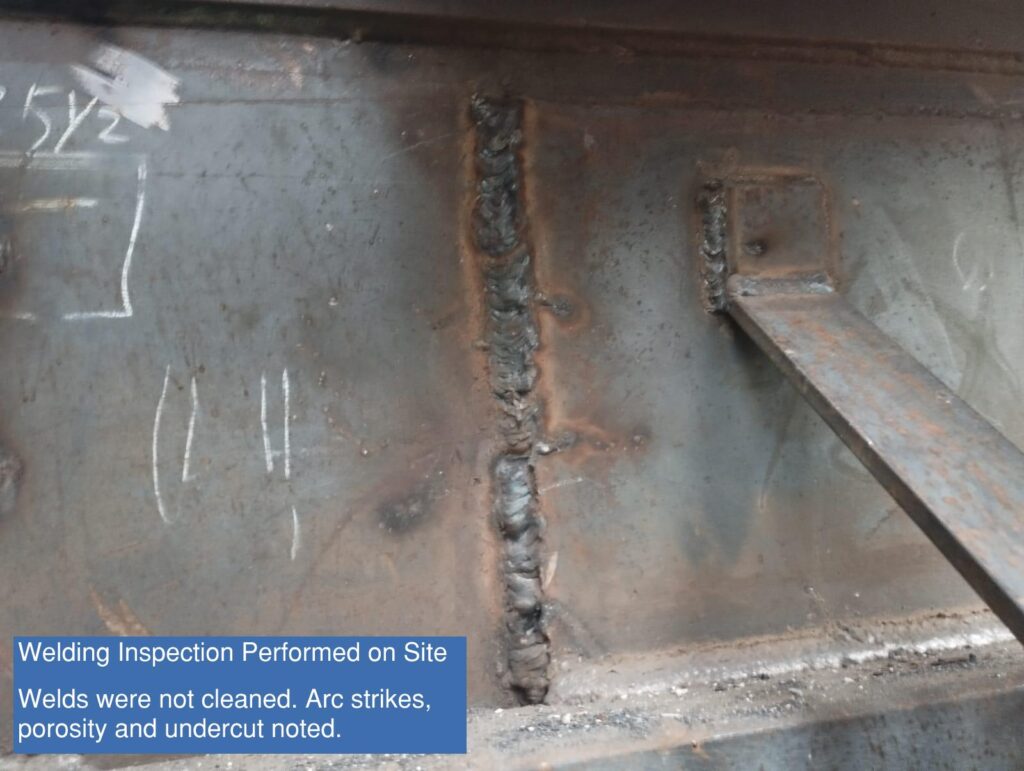The Ultimate Overview to Welding Inspection Racine for Industrial Standards
Cutting-edge Techniques to Fillet Weld Assessment and Testing: Enhancing Weld Quality and Compliance Criteria
In the realm of welding, the quality and stability of fillet welds play a vital role in making certain the structural soundness and dependability of various industrial parts. With the continuous drive for boosted effectiveness and compliance with rigid criteria, the exploration of cutting-edge techniques to fillet weld evaluation and testing has become critical. As markets advance, the standard methods may no more be enough in satisfying the needs of modern welding applications. By welcoming innovative technologies and methods, a brand-new horizon of possibilities arises in the world of weld quality evaluation and adherence to conformity standards.
Advanced Non-Destructive Screening Techniques
Making use of advanced technologies, advanced non-destructive screening methods play a critical function in making certain the stability and top quality of fillet welds. These methods, such as phased variety ultrasonic screening (PAUT) and magnetic particle testing (MPT), deal detailed insights right into the weld's internal structure without triggering any kind of damage to the material. PAUT, for example, utilizes several ultrasonic elements to examine the weld from numerous angles, providing an extensive visualization of prospective issues like lack of fusion or fractures.
By utilizing these sophisticated non-destructive screening strategies, weld assessors can accurately assess the quality of fillet welds, making certain compliance with industry requirements and guidelines. The capacity to spot flaws early on not only boosts weld top quality however likewise stops pricey rework or failings in architectural stability, highlighting the significance of these ingenious testing techniques in welding assessments.
Robotics and Automation in Assessment
The combination of robotics and automation has actually changed the examination process for fillet welds, enhancing efficiency and precision in quality assessment. Robotics supply precise control and repeatability in examining welds, guaranteeing consistent and dependable results. Automated systems can be set to follow certain inspection courses, ensuring complete coverage of welds and minimizing the risk of human mistake.
Robotic assessment systems furnished with innovative sensors can identify and measure weld attributes with high precision, offering thorough data for analysis. These systems can recognize problems such as cracks, lack of blend, and porosity, enabling timely rehabilitative actions to be taken. Furthermore, robotics and automation enable real-time information collection and evaluation, supplying immediate feedback to operators and promoting fast decision-making procedures.
Furthermore, making use of robotics and automation in fillet weld inspection improves general performance by reducing inspection times and enhancing assessment throughput. By enhancing the examination procedure, suppliers can ensure weld quality and compliance standards are satisfied effectively, eventually causing set you back financial savings and boosted item top quality.
Making Use Of Artificial Intelligence for Evaluation
Expert system plays a pivotal role in enhancing the efficiency and accuracy of analysis in fillet weld examination procedures. By harnessing the power of AI, inspectors can streamline the analysis of weld high quality and compliance standards, resulting in much more dependable and accurate results. AI formulas can quickly process large amounts of data from weld inspections, detecting problems or variances that might be testing to determine with the nude eye. This sophisticated innovation allows real-time monitoring of weld high quality, enabling instant restorative actions to be taken if any type of problems are found.
In addition, AI systems can pick up from past evaluation information, constantly boosting their ability to recognize potential flaws and discrepancies in fillet welds. This flexible knowing capacity enhances why not look here the general top quality control process, lowering the probability of human mistake and ensuring that welds satisfy the called for standards. By integrating artificial knowledge right into fillet weld analysis, sectors can achieve greater levels of effectiveness, uniformity, and compliance in their evaluation methods.
Portable Equipment for On-Site Assessment
 Enhancing area inspection effectiveness, the adoption of portable tools changes on-site assessment processes for fillet welds. These tools provide versatility and comfort, enabling examiners to perform detailed examinations in various locations, including remote or challenging environments. Portable devices such as ultrasonic screening tools, magnetic fragment examination tools, and electronic radiography systems give real-time information and high-resolution imaging capacities, enabling fast decision-making and immediate responses on weld quality.
Enhancing area inspection effectiveness, the adoption of portable tools changes on-site assessment processes for fillet welds. These tools provide versatility and comfort, enabling examiners to perform detailed examinations in various locations, including remote or challenging environments. Portable devices such as ultrasonic screening tools, magnetic fragment examination tools, and electronic radiography systems give real-time information and high-resolution imaging capacities, enabling fast decision-making and immediate responses on weld quality.One considerable benefit of portable tools is their ability to improve evaluation procedures, reducing downtime and boosting total efficiency. Examiners can easily transfer these devices to various task sites, removing the demand for delivering heavy machinery or parts to off-site facilities. Additionally, the transportability of these devices promotes cost-effectiveness by minimizing transport expenses and increasing examination timelines.
Additionally, making use of mobile devices for on-site evaluation promotes aggressive quality assurance actions, as examiners can quickly identify and resolve any type of potential welding flaws or inconsistencies. By including these ingenious technologies right into on-site examination practices, welding specialists can make certain compliance with industry standards and improve weld top quality, ultimately causing boosted architectural stability and safety and security in different welding applications.
Integration of Information Administration Solution
Having actually optimized on-site examination processes with the application of portable tools, the following stage involves the seamless assimilation of information management systems to additionally boost efficiency and data evaluation capacities in fillet weld inspection and testing. Welding Inspection Racine. By integrating information monitoring systems right into the evaluation process, companies can simplify data collection, storage, and analysis. This combination enables real-time tracking of weld top quality, instant recognition of defects, and timely decision-making to fix any problems that might emerge during the inspection process
The combination of information administration systems enables smooth interaction in between various stakeholders included in the inspection process, cultivating partnership and boosting general top quality control steps. Inevitably, the combination of information management systems offers to elevate the criteria of fillet weld evaluation and screening, guaranteeing conformity with market laws and enhancing weld quality.
Final Thought
To conclude, ingenious strategies to fillet weld inspection and testing have actually considerably improved weld top quality and compliance standards. Advanced non-destructive testing approaches, robotics, automation, expert system, portable tools, and information monitoring systems have actually revolutionized the method weld assessments are performed. By visit making use of these technologies, industries can guarantee that welds satisfy the called for top quality standards and regulations, ultimately enhancing general effectiveness and security in visit the website welding procedures.

By using these innovative non-destructive screening strategies, weld assessors can properly evaluate the quality of fillet welds, making sure compliance with market standards and policies. Portable tools such as ultrasonic testing tools, magnetic fragment examination tools, and electronic radiography systems give real-time information and high-resolution imaging abilities, allowing quick decision-making and immediate feedback on weld quality.
Having optimized on-site inspection processes through the usage of mobile devices, the following stage entails the smooth combination of data administration systems to additionally improve effectiveness and data evaluation capabilities in fillet weld inspection and screening (Welding Inspection Racine). Ultimately, the assimilation of data management systems offers to raise the requirements of fillet weld evaluation and testing, making certain conformity with market regulations and boosting weld high quality
 In verdict, ingenious techniques to fillet weld evaluation and testing have actually dramatically improved weld high quality and compliance criteria.
In verdict, ingenious techniques to fillet weld evaluation and testing have actually dramatically improved weld high quality and compliance criteria.